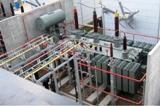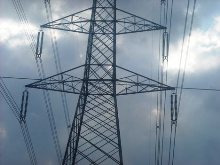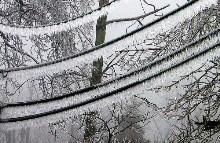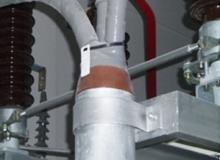Reliability of electrical equipment and power systems
Basic concepts and definitions of reliability
 Reliability is closely related to various aspects of the operation of electrical installations. Reliability - the property of an object to perform certain functions, maintaining on time the values of its performance indicators within certain limits, corresponding to certain modes and conditions of use, maintenance, repair, storage and transportation.
Reliability is closely related to various aspects of the operation of electrical installations. Reliability - the property of an object to perform certain functions, maintaining on time the values of its performance indicators within certain limits, corresponding to certain modes and conditions of use, maintenance, repair, storage and transportation.
Reliability in terms of power supply systems: continuous power supply within acceptable limits indicators of its quality and eliminating situations dangerous to people and the environment. In this case, the object should work.
Under operability means such a state of the elements of the electrical equipment, in which they are able to perform the specified functions, while maintaining the values of the specified parameters within the limits established by the normative and technical documentation.In this case, the elements may not meet, for example, requirements related to appearance.
An event involving equipment failure is called rejection... The causes of failures can be design, manufacturing and repair defects, violations of operating rules and regulations, natural wear processes. By the nature of the change of the main parameters of the electrical equipment until the moment of failure, they are distinguished between sudden and gradual failures.
A sudden failure is called a failure that occurs as a result of a sudden sharp change in one or more basic parameters (phase breakdown of cable and overhead lines, destruction of contact connections in devices, etc.).
Gradual damage is called damage that occurs as a result of a long, gradual change in parameters, usually due to aging or wear (deterioration of insulation resistance of cables, motors, increase in contact resistance of contact connections, etc. ). At the same time, changes in the parameter compared to the initial level can in many cases be recorded using measuring devices.
There is no fundamental difference between sudden and gradual failures. sudden failures in most cases are the result of a gradual, but hidden from observation, change in parameters (for example, wear of mechanical assemblies of switch contacts), when their destruction is perceived as a sudden event.
 A non-reversible failure indicates a loss of performance… Intermittent — repeatedly self-eliminating failure of an object.If the failure of an object is not due to the failure of another object, then it is considered independent, otherwise — dependent.
A non-reversible failure indicates a loss of performance… Intermittent — repeatedly self-eliminating failure of an object.If the failure of an object is not due to the failure of another object, then it is considered independent, otherwise — dependent.
A failure resulting from an imperfection or violation of established design rules and regulations is called a structural… A failure that occurred as a result of an imperfection or violation of the established process of production or repair of an object carried out in a repair enterprise — production… Failure as a result of violation of the established rules or conditions of operation — operational… Reason for rejection — defect.
Reliability is one of the properties of electrical equipment and power systems that manifests itself only during operation. Reliability is defined during design, ensured during manufacture, consumed and maintained during operation.
Reliability is a complex property, which, depending on the specifics of the electrical installations and the conditions of its operation, may include: reliability, durability, maintenance, storage separately or in a certain combination, both for the electrical installations and for its individual elements.
Sometimes reliability is equated with reliability (in this case, reliability is considered in the "narrow sense").
Reliability - the property of technical means to maintain continuous operability for a certain period of time. It is the most important component of the reliability of electrical installations, depending on the reliability of the elements, their connection scheme, structural and functional characteristics and operating conditions.
Durability - the property of technical means to remain in service until the occurrence of the limit state with the established system of maintenance and repair.
In the case under consideration, the limit state of the technical means is determined by the impossibility of their further functioning, which is caused either by a decrease in efficiency, or by safety requirements, or by the onset of obsolescence.
Maintenance — the property of technical means, which is adaptability to the prevention and detection of the cause of damage and elimination of their consequences through maintenance and repair.
Maintenance characterizes most elements of electrical installations and does not make sense only for those elements that are not repaired during operation (for example, insulators of overhead lines (HV)).
Persistence — the property of technical means to continuously maintain a serviceable (new) and serviceable condition during storage and transportation. The preservation of PP elements is characterized by their ability to withstand the negative effects of storage and transportation conditions.
The choice of quantitative indicators of reliability depends on the type of power equipment. Those elements of electrical installations whose performance in the event of damage cannot be restored during operation (current transformers, cable inserts, etc.) are called non-recoverable.
Recoverable are products whose performance in the event of damage must be restored during operation. Examples of such products are electrical machines, power transformers, etc.
The reliability of remanufactured products is determined by their reliability, durability, maintenance and storage, and the reliability of non-renewable products is determined by their reliability, durability and storage.
Factors affecting the reliability of electrical installation elements
 Electrical installations used for transformation, transmission and distribution of electricity are exposed to a large number of factors that can be classified into four groups: environmental influences, operational, accidental, design and installation errors.
Electrical installations used for transformation, transmission and distribution of electricity are exposed to a large number of factors that can be classified into four groups: environmental influences, operational, accidental, design and installation errors.
Environmental factors, where the elements of electrical installations function, include the intensity of thunderstorms and wind activity, ice deposits, heavy rains, precipitation, dense fog, frost, dew, solar radiation and others. Most environmental factors are listed in climate reference books.
With regard to transfer devices — overhead lines of all voltage classes — the most characteristic factors contributing to their damage are rain showers, precipitation, dense fog, frost and dew, and for power transformers installed on open-type electrical installations, the factors of the environment include solar energy, radiation, atmospheric pressure, ambient temperature (a factor closely related to the location category and climatic conditions).
A feature of the operation of the elements of open-type electrical installations of all voltage classes is the change of all factors, for example, a change in temperature from + 40 ± to -50 ± C.Fluctuations in the intensity of thunderstorm activity in the regions of our country vary from 10 to 100 or more thunderstorm hours per year.
The impact of external climatic factors leads to the appearance of defects during operation: wetting of the oil in transformers and oil circuit breakers, wetting of the insulation in the tank and insulation of the traverses of the oil switches, wetting of the bushing frame, destruction of the supports and insulators of bushings under ice, wind load, etc. Therefore, for each climatic region, during the operation of an electrical installation, it is necessary to take into account environmental factors.
 Operational factors include overloading of electrical installation elements, short-circuit currents (overcurrent), various types of overvoltages (arcing, switching, resonance, etc.).
Operational factors include overloading of electrical installation elements, short-circuit currents (overcurrent), various types of overvoltages (arcing, switching, resonance, etc.).
According to the rules of technical operation, overhead lines 10 — 35 kV with an isolated neutral can work in the presence of a single-phase earth fault, and the duration of their removal is not standardized. Under these operating conditions, arcing faults in branched distribution networks are the main cause of weakened insulation failure.
For power transformers, the most sensitive operational factors are their overload, mechanical forces on the windings at short-circuit through currents. A significant place in the operating factors is occupied by the qualification of the staff and the accompanying effects (mistakes by the staff, poor quality repairs and maintenance, etc.).
The group of factors that indirectly affect the reliability of electrical installations include design and installation errors: non-compliance with the guidelines during design, non-compliance with reliability requirements, non-compliance with the magnitude of capacitive currents in 10 — 35 kV networks and their compensation during the development of networks, low-quality production of electrical installation elements, installation defects, etc.
A small group of factors affecting the reliability of electrical installations in operation are accidental factors: collision of transport and agricultural machines on supports, overlap of a moving vehicle under the overhead lines, interruption of wires, etc.
Reliability of power supply to consumers
It is technically possible to create such systems, and those that fail will rarely occur (highly reliable elements with a perfect tonic service system, the use of circuits with multiple cuts, etc.). But the creation of such systems will require increased investment. and operating costs. Therefore, there are solutions to improve the reliability economic aspect: they strive not for the maximum achievable reliability, but for a rational one, optimal according to every technical and economic criterion.
For standard design solutions PUE does not require reliability calculations: the categories are highlighted energy consumers in terms of power supply reliability (in general, they differ in the amount of damage from a power failure), for which the redundancy of networks (the number of independent sources) and the presence of emergency automation ( allowable duration of power failure).
In terms of ensuring power supply reliability, PUE divides electrical consumers into three categories: first, second and third. Assignment of an electrical receiver to one or another category in terms of reliability must occur on the basis of regulatory documentation, as well as in the technological part of the project (ie, it is determined by design engineers).
For more details on the characteristics of each category, see here: Power supply reliability categories of electrical receivers
